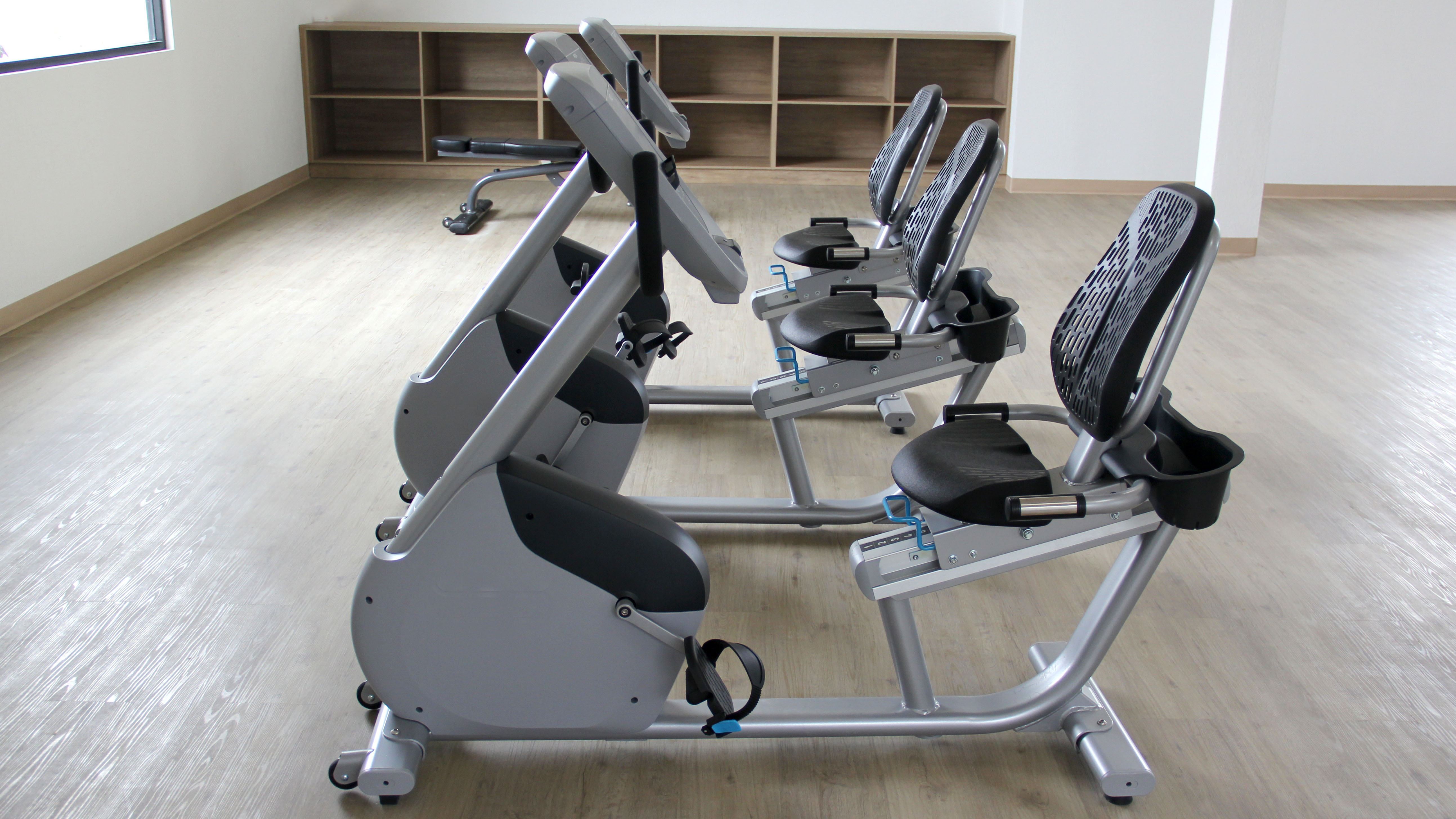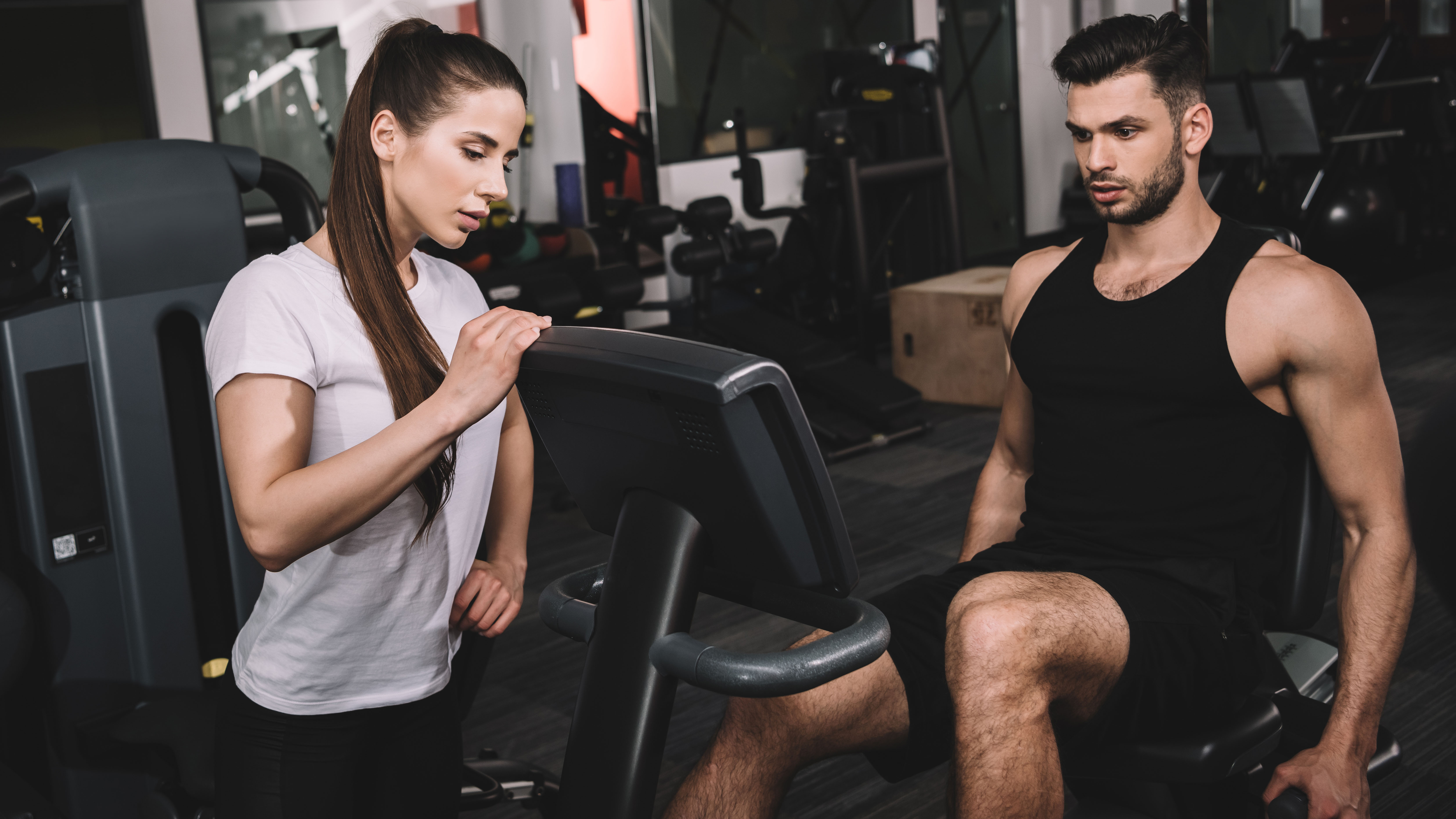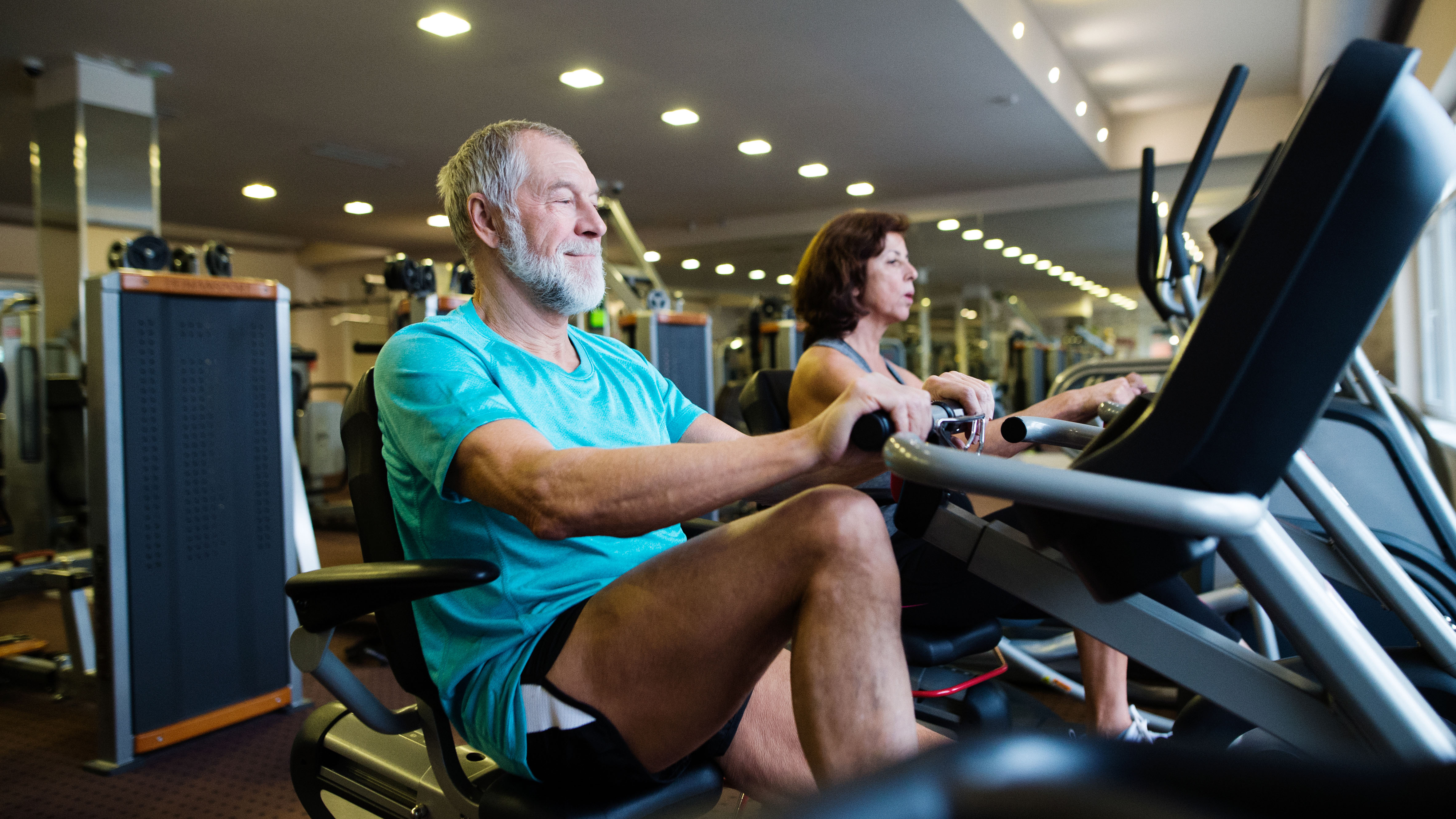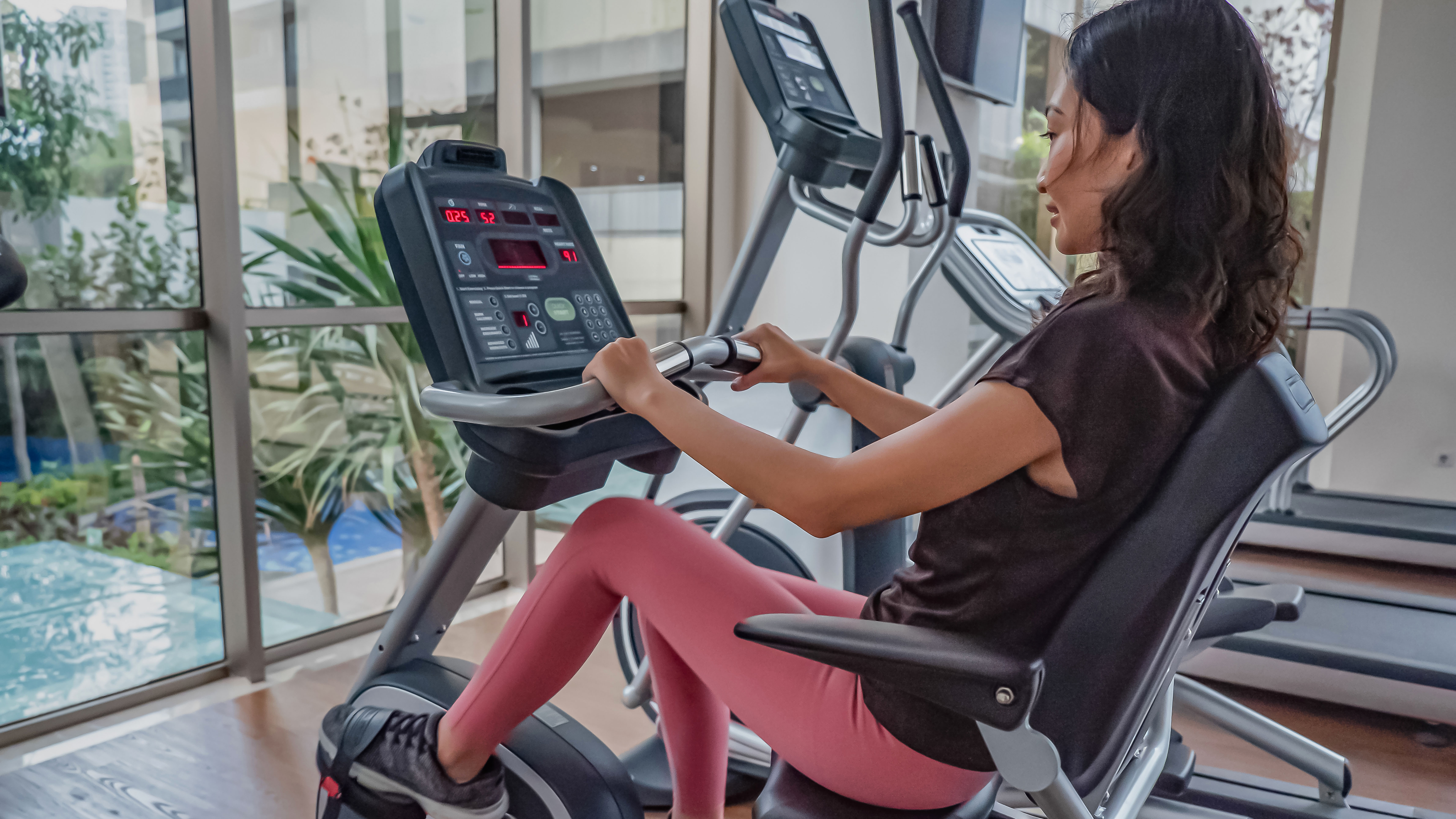Are recumbent exercise bikes effective?
Are recumbent exercise bikes effective? We examine the evidence.

Are recumbent exercise bikes effective? Well, that depends on what you're using them for. If you're talking about speed, then yes, they're definitely effective – the VeloX3 recumbent bike is in fact the fastest bicycle in the world, holding the world speed record at 133.78 km/h (83.13mph).
However, stationary recumbent bikes are a bit different. These machines are one of several different types of exercise bikes used for cardio workouts. Their seats are typically much lower to the ground and their pedals are positioned in front of the cyclist, rather than directly beneath them.
In this article we will explain what a recumbent exercise bike actually is, find out if they offer the same exercise bike benefits as their upright counterparts, discover who they are suited to, and learn how to effectively use one with the help of bike mechanic and specialist Dominic Reynoldson and sports scientist and advisor Andy Bedford.
- Read more: Best exercise bikes
What are recumbent exercise bikes?

Reynoldson told Live Science that recumbent exercise bikes "Stand out from the rest for their ergonomic design. The seat is much closer to the ground than a standard bike, therefore the rider is in a reclined position." The bucket seat comes with a backrest, and the strap pedals are positioned at the front, meaning your weight is better distributed as opposed to a traditional upright exercise bike.
"The position of the body on this bike makes it much more aerodynamic," he added, which is a contributing factor to its speed (on the road). However for an exercise bike, its sturdy, reclined shape makes it very comfortable to use. Some of the more elite recumbent exercise bikes feature arm rests and built-in screens, not only for monitoring your activity, but for watching TV, so if you prefer to have an added distraction when working out, a recumbent exercise bike might be for you.
"There are also a wide range of recumbents that differ in size. Some feature a rear wheel and others have hands-free steering," said Reynoldson. "You can even get tricycle recumbents."
Are recumbent exercise bikes effective?

Reynoldson believes they are effective due to their level of comfort: "You can plough on with a lower chance of injury. On upright bikes, your weight is centred around the bike seat, which can lead to saddle sores. Also, constant downward pressure on your tailbone can cause further discomfort. Upright bikes place more pressure on the quad muscles too, which can result in potential aggravation for the kneecaps."
Get the world’s most fascinating discoveries delivered straight to your inbox.
The results of a clinical trial, published in Biomedical Sciences Instrumentation, also suggest that recumbent cycling might put less pressure on the anterior cruciate ligament – a ligament that's crucial to knee stabilization.
He added: "For the calorie counters, you should be burning a similar number whichever exercise bike you choose, but from experience, the bike you feel most comfortable on will push your workout further as you will be able to spin on the bike for longer periods.”
So, whether you've got an upright or recumbent exercise bike, you'll reap the benefits when hitting these HIIT bike workouts.
Reynoldson believes that the only reason upright exercise bikes are more common is because "they look like the bikes we learnt to ride outside of the gym. Past experiences are easily transferable compared to the new motion and seating position that would come from a recumbent".
Who are recumbent exercise bikes most suited to?

We spoke to sports scientist Andy Bedford about who the target audience is for recumbent exercise bikes, and he informed us that "due to the reclined design of the bike, it's a perfect piece of equipment for those with back problems. These bikes provide a great lower-body workout that's relatively low impact. However, as the user’s torso and arms are relaxed while riding, it doesn’t engage the upper body like a standard cycle exercise bike".
Bedford believes the 'easy rider' nature of recumbent exercise bikes mean they would be "best suited to people who benefit from low-impact exercise such as seniors, people with back or joint pains such as arthritis, and those who struggle with high levels of cardiovascular endurance or have respiratory problems such as asthma."
It's also a great gateway bike if you're looking at starting a fitness journey with no previous experience. Reynoldson told us that "some of my customers feel safer when using a recumbent on the roads because they feel more in control". He also adds that "customers who own recumbents often tell me they receive special treatment because passers-by will smile and wave due to its rarity on the roads, making the bike a real conversation starter".
How to use a recumbent bike most effectively

Bedford tells us that, just like all pieces of exercise equipment, if you wish to get the best results and to reduce chances of injury, the equipment must be adjusted to fit the user correctly. However, with a recumbent exercise bike you should "start with the seat and give it a test pedal before locking it into the most comfortable position". Then, depending on the model, you should adjust the arm and footrests. Bedford also urges users to be aware of their posture: "If you find yourself hunching forward, then that’s a good indication the seat isn’t in the correct position."
Bedford suggests starting slowly and warming up on the recumbent before building up your speed and the resistance on the machine. "Don’t spend too much time pedaling leisurely, though, because your legs will get used to an easy pace. Ramp up the resistance so your quads, calves, hamstrings, abs and glutes feel the benefit." You should also keep an eye on your activity on the monitor if your recumbent exercise bike has one, so you can keep track of progress and push yourself a little further each time.
Rachael is a UK-based freelance writer and screenwriter. She has a background in film, music, health and fitness which enables her to dive deep into a broad range of topics. When she isn’t creating content or writing films, she enjoys watching films, reading about films and talking about… films.



